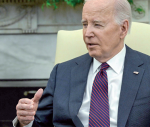You are here
The gospel of Francis
Apr 21,2014 - Last updated at Apr 21,2014
Pope John XXIII and Pope John Paul II are the odd couple of modern Roman Catholicism.
The avuncular John XXIII, who wanted to loosen up a hidebound church, and the combative John Paul II, who struggled to rein in what he viewed as the excesses of the Second Vatican Council that John XXIII had convened, appear to be ideological opposites.
Yet Pope Francis will canonise the pair this month — a surprising move that may offer a glimpse into his goals for the church.
The most obvious implication is that Francis is weary of polarisation, and hopes that the dual canonisation will help propel a shift towards a “big tent” Catholicism that appeals to a broader range of people.
Francis is certainly in a strong position to initiate such a shift; his political capital is extraordinarily high, surpassing even that of US President Barack Obama in his early days in office.
People seem to appreciate his preference for teaching by example and dramatic gesture — exemplified by his canonisation of the rival stars of Vatican II — rather than by encyclical.
Will this strategy be enough to bring lapsed Catholics back into the fold, or to bridge the gap between the largely conservative generation of “John Paul II priests” and younger, more liberal Catholics?
Will the recalcitrant elements in the ecclesiastical establishment be amenable to Francis’ changes?
The modernisation process that John XXIII initiated was in line with the ebullience of the early 1960s. John Paul II viewed his long tenure, from 1978 to 2005, as a course correction to the moral licence and sexual experimentation of that decade.
Francis has framed his pontificate as a sort of synthesis of this dialectical tension.
So far, Francis’ actions have not sparked the kind of confrontational response or mass mobilisation this is often associated with regime change in authoritarian systems.
But that does not mean that it will be smooth sailing. Francis still faces widespread apathy among believers, especially in the advanced industrial societies, where disaffected Catholics are increasingly questioning their commitment or simply opting out.
While Francis’ soothing manner seems to be helping to slow this erosion, whether he will be able to reverse the trend remains far from certain.
For starters, it is more difficult to rally support for a positive agenda than it is to build solidarity through opposition to presumed enemies.
Instead of employing the dyspeptic condemnations of “relativism”, “secularism”, “nihilism” and other “-isms” that John Paul II and his successor Pope Benedict XVI used to rally their base, Francis has formulated a positive agenda focused on social justice.
And while rising global concern about income inequality has put some wind in Francis’ sails, his agenda has yet to make an impact on Catholic policy makers like Republican US congressmen Paul Ryan and John Boehner or powerful figures in the church.
A second potential obstacle for Francis is that he, like his predecessors, is promoting a revolution from above. The Vatican II reforms, for example, emerged not from a populist groundswell, but from the preferences of progressive theologians and bishops.
This hierarchical approach, in which spectatorship trumps participation among the rank and file, is a major reason for indifference among ordinary Catholics today.
Another key challenge for Francis is the laity’s growing independence from clerical authority. In recent decades, lay managers and workers in the church’s network of schools, hospitals, and social service providers have largely replaced priests and nuns. As a result, since Vatican II, episcopal — and ultimately Vatican — control over church-linked ministries has gradually waned. Around half of the budget of Catholic Charities USA, for example, comes from the government. Virtually none of these operations is in open rebellion against Rome; many just quietly go their own way.
So do many ordinary Catholics. Devout after a fashion, they follow their conscience or their convenience — their lives a more or less amiable standoff between doctrinal prohibitions and vernacular practice. As the comedian Bob Newhart observed, “the Pope leaves us alone; we leave the Pope alone”.
Papal initiatives are thus subject to significant cultural and institutional constraints. And there is only so far Francis is likely to go.
A self-described “obedient son of the church”, he is unlikely to surprise the faithful when it comes to matters like sexuality and women’s ordination.
At the same time, Francis’ Jesuit background has instilled in him a certain independence and flair for the quirky (like nonchalantly sanctifying John XXIII and John Paul II in one fell swoop).
The Society of Jesus — whose spirituality is based on a seemingly discordant yet enduring combination of mysticism and realpolitik — has forged a paradoxical alliance of fidelity to corporate commands and willingness to give individual talents their due.
Traditional hierarchies routinely cultivate eccentrics as harmless adornments of a rigid order.
Catholicism has had mad popes and bad popes and occasionally good popes. It is used to seeing the world turn upside down for a few days during carnival, and then go back to normal.
But there is something to be said for the fact that Francis is ultimately his own man.
Now, what Max Weber called the slow grinding of hard boards — leveraging a concrete programme of structural reform onto a charismatic personality — begins. Or the enterprise stays where it often seems to be: mostly smoke and mirrors, a grand illusion.
The writer, author of “The Catholic Labyrinth”, is professor emeritus of political science at Arizona State University. ©Project Syndicate/Institute for Human Sciences, 2014. www.project-syndicate.org












